Supermicro 2049P-TN8R Topology
With four-socket servers, topology is a big deal. Here is a diagram of the system’s topology with the two 25GbE adapters.

We checked the block diagram in the manual, and some of the PCIe slots are tied to the other two CPUs not shown in our system’s topology map.
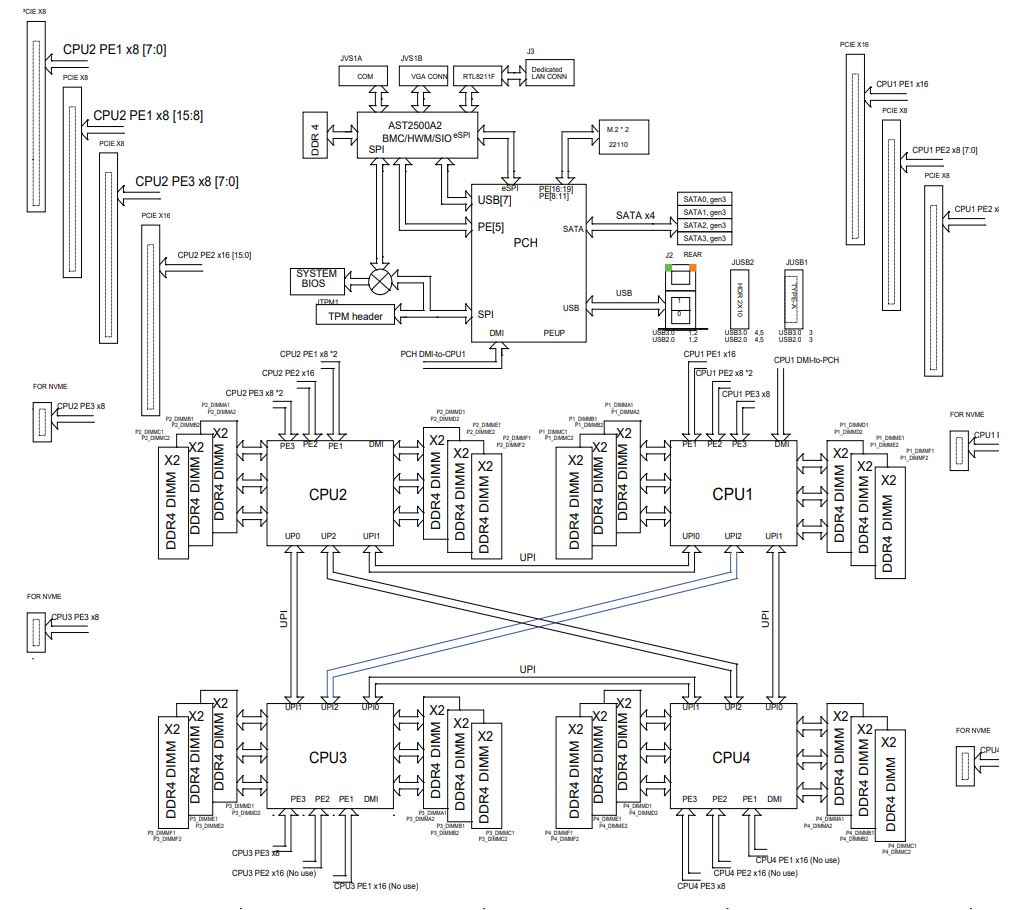
One can see some of the optimizations in the block diagram as well. All of the PCH’s SATA ports are not exposed in the system. One can also see the single NIC to save on PCIe lanes versus dual NIC solutions.
Supermicro 2049P-TN8R Management
These days, out of band management is a standard feature on servers. Supermicro offers an industry-standard solution for traditional management, including a WebGUI. This is based on the ASPEED AST2500 solution, a leader in the BMC field. The company is also supporting the Redfish management standard.
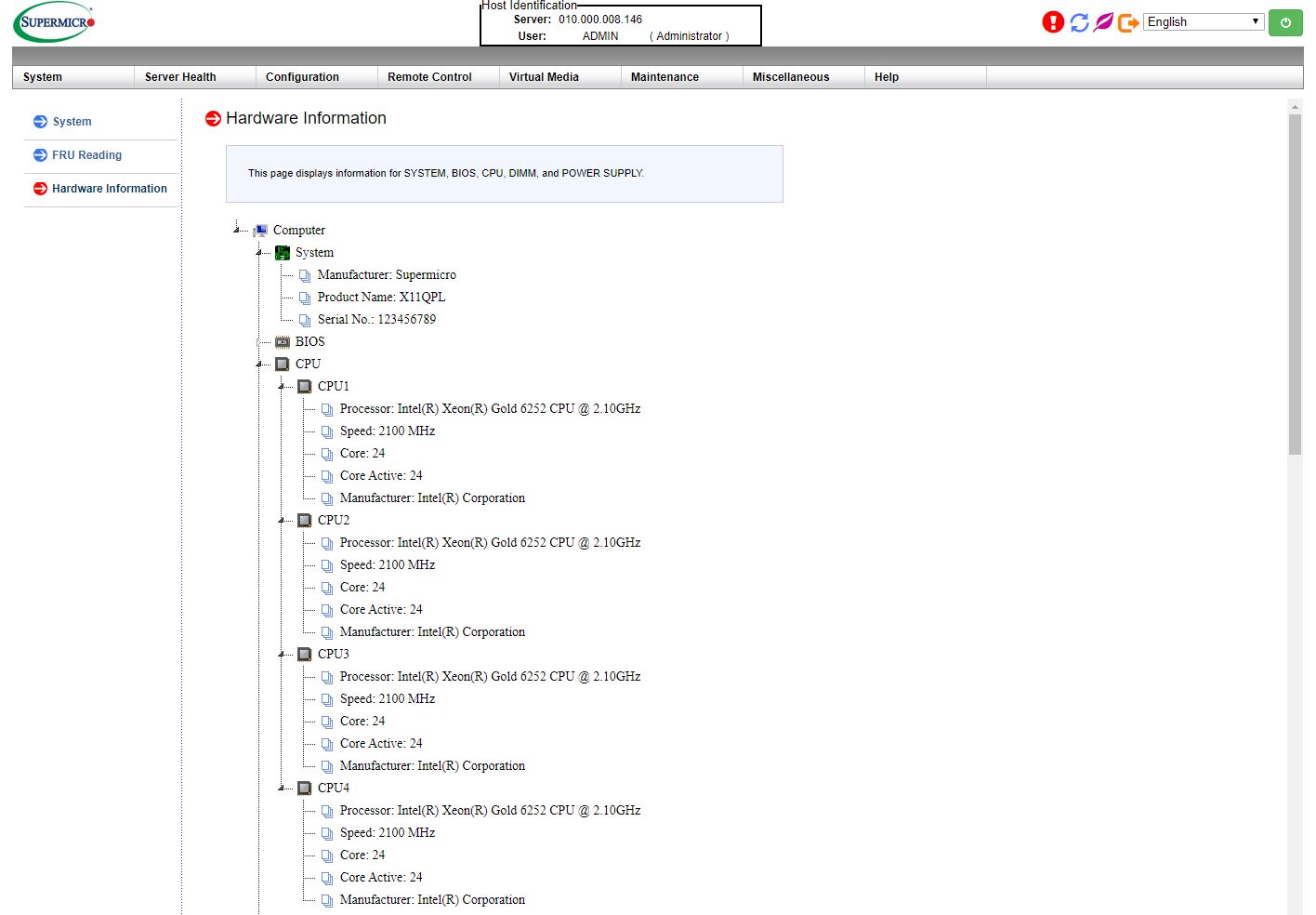
On this server, we see similar features as we would across the Supermicro X11/H12 ranges. That means whether you are using an embedded Intel motherboard or a 4U EPYC storage server, you will have a similar look and feel to the management experience.
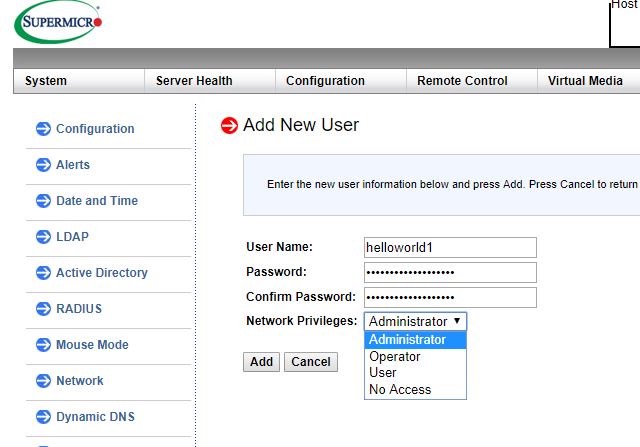
One can see one of the newer features in Supermicro’s management solution. Here there is NVMe drive status reporting.
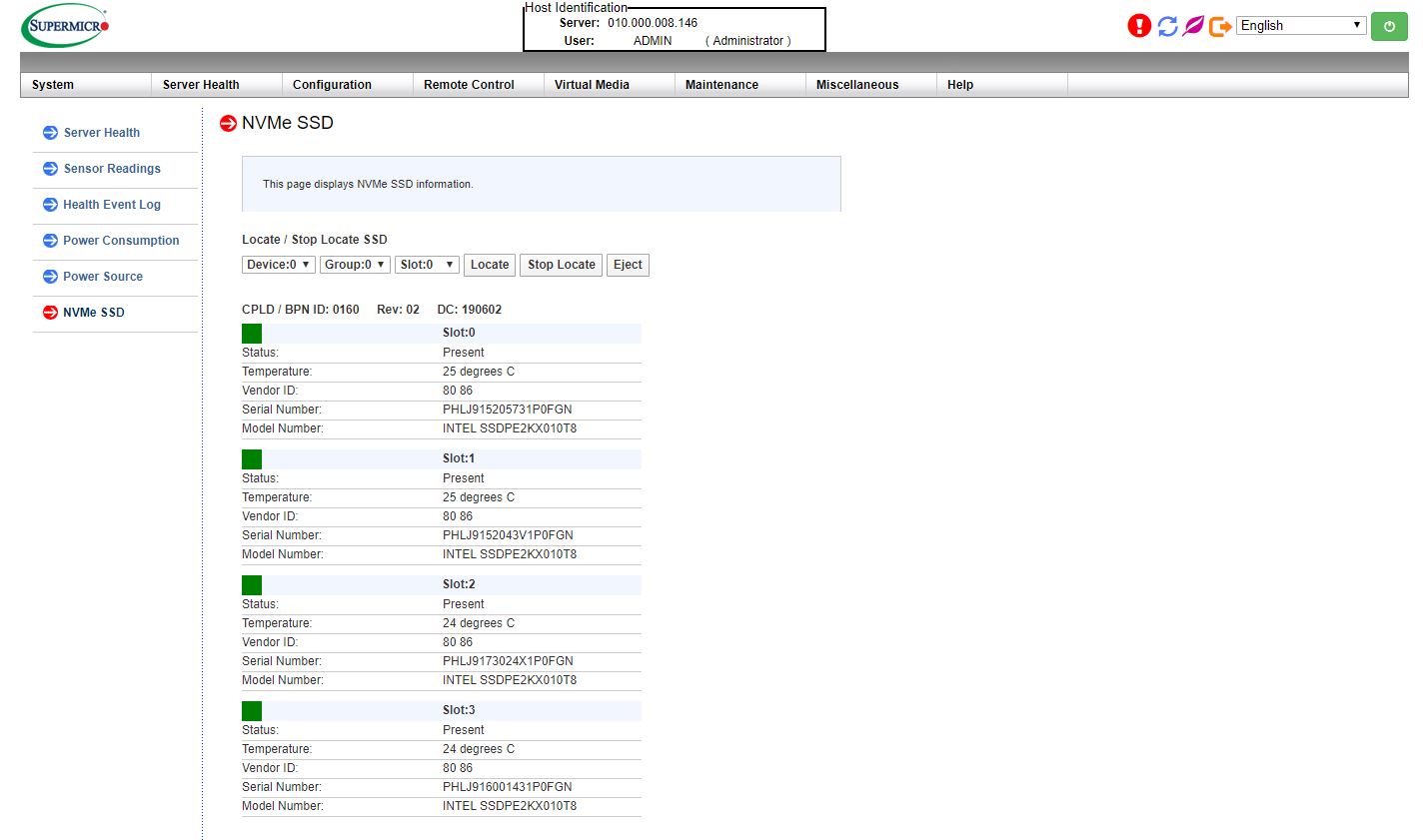
Supermicro also has power monitoring features. This telemetry data is also available through the Redfish API which allows for more efficient fleet management and alerting.
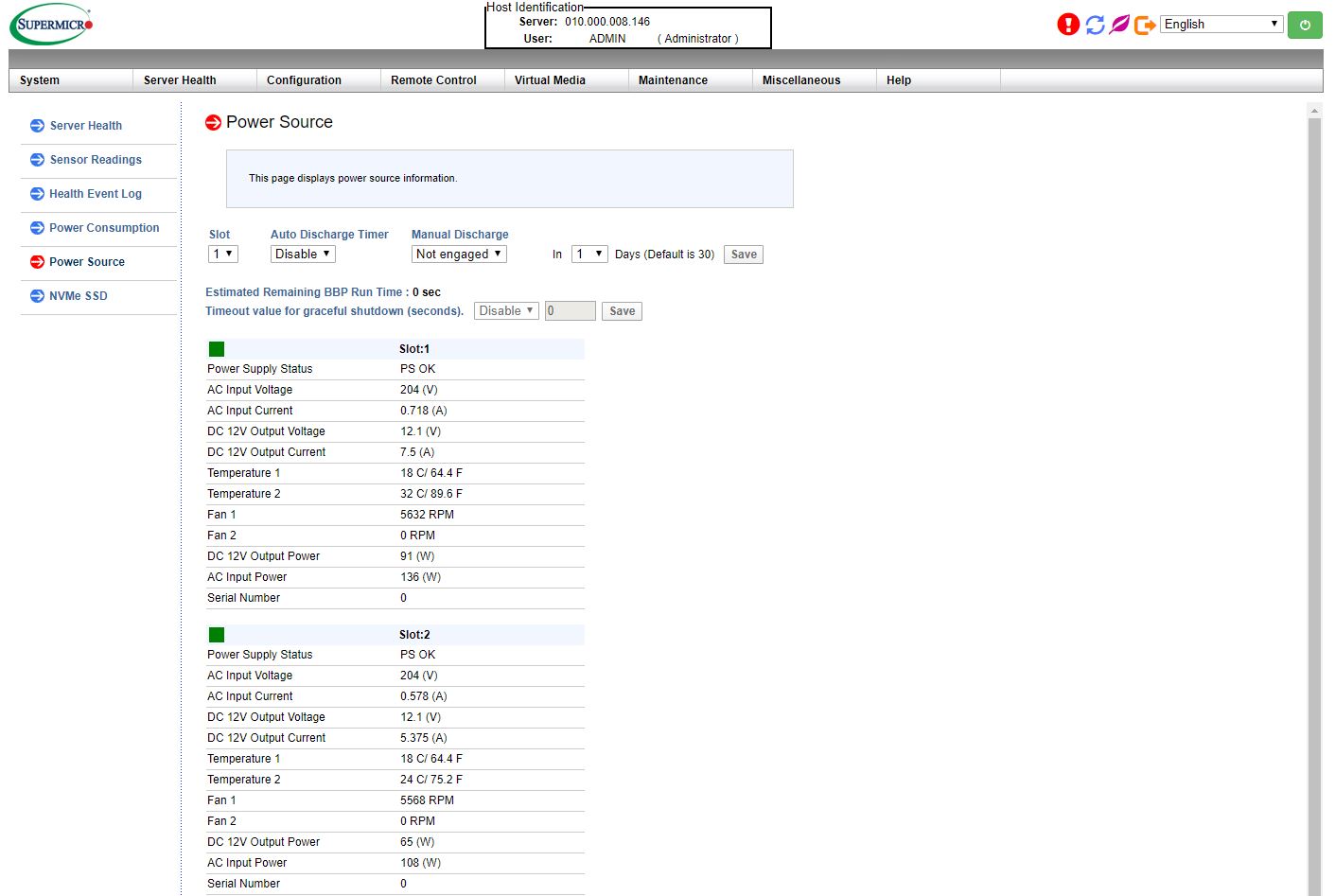
In the latest generation of Supermicro IPMI is an HTML5 iKVM. One no longer needs to use a Java console to get remote KVM access to their server.
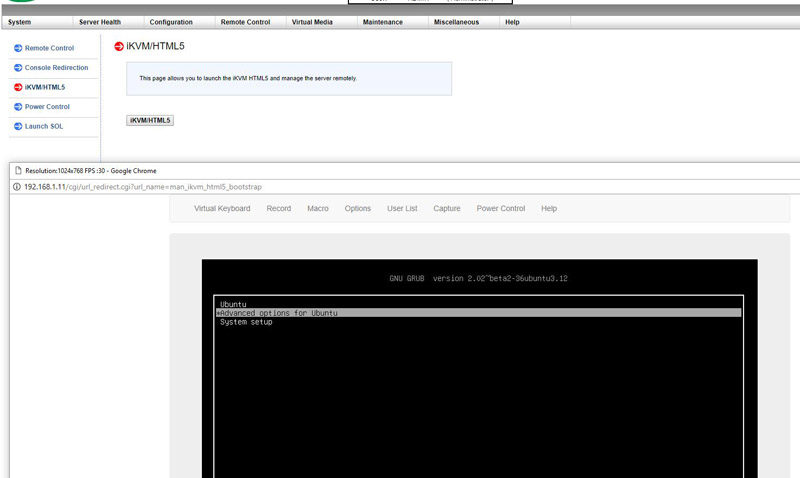
Currently, Supermicro allows users to utilize Serial-over-LAN, Java or HTML5 consoles from before a system is turned on, all the way into the OS. Other vendors such as HPE, Dell EMC, and Lenovo charge an additional license upgrade for this capability (among others with their higher license levels.) That is an extremely popular feature. One can also perform BIOS updates using the Web GUI but that feature does require a relatively low-cost license (around $20 street price.) That is a feature we wish Supermicro would include with their systems across product lines.
This pricing differential for a serviceable iKVM functionality is a big deal in this segment. Adding a $200 license to a server can add 10% or more in the embedded platform costs. Supermicro’s iKVM feature is extremely popular due to its inclusion with the server.
Supermicro 2049P-TN8R Test Configuration
For this test we utilized the following setup:
- System: Supemicro SYS-2049P-TN8R
- CPU: Intel Xeon Gold 6252
- RAM: 48x 16GB DDR4-2933 ECC RDIMMs
- Storage: 8x Intel DC P4510 2TB, 2x Intel DC S3700 400GB (OS)
- PCIe Networking: 2x Supermicro AOC-S25G-i2S Dual Port 25GbE NIC
A quick note here, we did not utilize the Intel Optane DCPMM here because we had standard chips. Using Intel Optane DCPMM even with two 128GB modules per CPU to stay well below the 1TB per CPU memory limit would have meant our memory would work at only DDR4-2666 speeds.
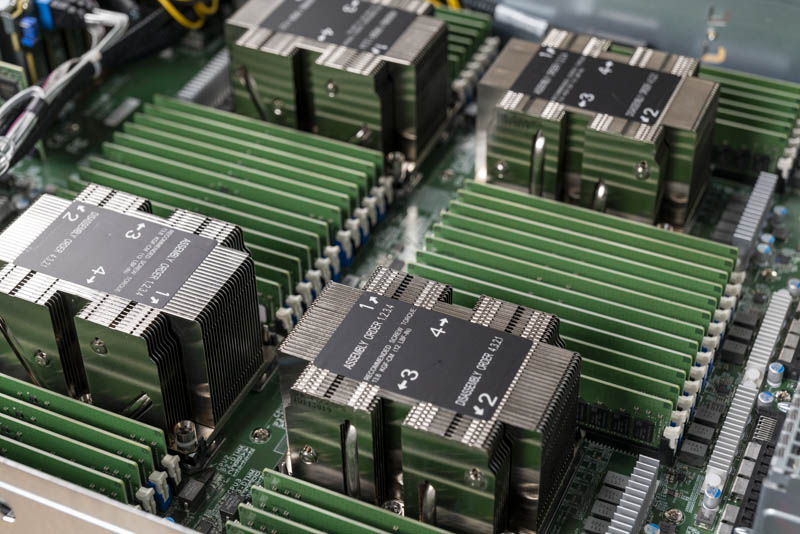
Also, we expect most buyers of this system to use, at minimum, 32GB RDIMMs, but we wanted to ensure we were pushing the platform.
Next, we will look at performance.




Can Supermicro get STH a JBOF to connect to this to test? That’d be a neat combo.
Any tests planned vs. a 2P EPYC Rome system? Would be good to see the performance and power comparisons.
Hi MoreServersPlease. In these reviews, we focus on options that one can configure in the platform being reviewed. You may be looking for the CPU review which we published here: Quad Intel Xeon Gold 6252 Benchmarks and Review
Why exactly 3would anyone even think of using Xeon thesee days ?
It has more security holes than a swiss cheese, it’s relatively highly priced and with uncertain upgrade path.
What’s the point ?
Brane2: you can’t probably have number of DIMMS available in this system in any even dual cpu Epyc system. Otherwise you are absolutely right.
Compability with existing environment
Certain applications are certified only for Intel (e.g. SAP HANA, NFV apps using Intel DPDK)
4P 6230 are more cost effective than 2P 7742 – so if rack space, electricity & licensing is not an issue then Intel is still viable
Anyway – thank you very much Patrick for this test.
This is really clever design to turn some things around in order to make the platform more compact.
We bought Dells R840 and we had to buy deeper racks to accomodate them.
@Zibi
“Certain applications are certified only for Intel (e.g. SAP HANA, NFV apps using Intel DPDK)”
Both the software and the intel hardware have proven to have more holes than Swiss cheese.
Both have certified leaks. Some are by accident others are forced by the US-goverment (it’s hard to spy on Huawei, ZTE, etc.. hardware without US certified leaks).